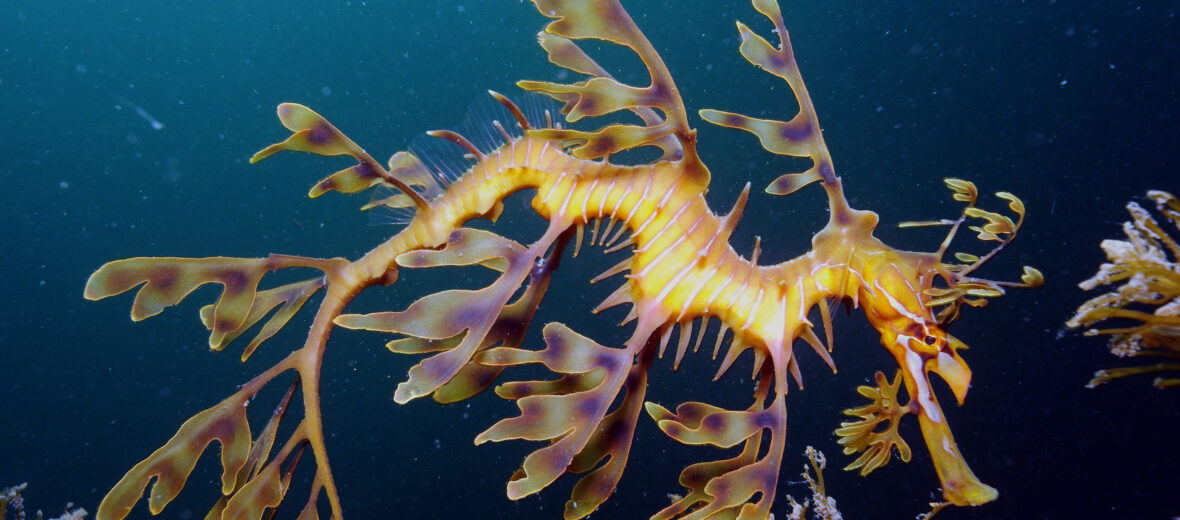
The leafy sea dragon or Glauert’s sea dragon is a marine fish that includes sea dragons, pipefish, and seahorses. They are found along the southern and western coasts of Australia. These threatened sea creatures are now a protected species due to divers taking them home with them for their aquariums, and poaching for traditional medicine. Don’t be that person! They are also threatened by pollution and habitat loss.
First the Stats…
Scientific name: Phycodurus eques
Weight: Up to 8+ ounces
Length: Up to 14 inches
Lifespan: Up to 9 years
Now on to the Facts!
1.) The Leafy Sea Dragon has no known predators.
2.) These sea dragons have evolved to give themselves near-perfect camouflage in seaweed. However, the leafy structures covering their body are not used for moving about the water. To move, they use 2 fins: one pectoral and one dorsal, that are so thin they are nearly transparent.
3.) Sea dragon males are, like sea horses, responsible for bearing children. However, instead of a pouch (like sea horses possess) male sea dragons have a spongy brood patch located on the underside of their tail where females deposit their pink eggs during mating.
4.) Leafy sea dragon eggs are fertilized during the transfer from the female to the male. The males then incubate the eggs and carry them to term, releasing tiny replicas of themselves into the water after about 4 – 6 weeks. The babies are born ready to tackle the world on their own.
5.) They prey on small crustaceans like young plankton, mysids, or sea lice.
But wait, there’s more on the leafy sea dragon!
6.) The combo of magnificent camouflage, sharp dorsal spines, and tough jointed plates offer perfect protection against all but humans. They can also change color to match their surroundings and sway with the current to mimic swaying sea vegetation.
7.) They swallow their prey whole, creating a suction to draw in the prey item into their small mouth by expanding a joint on the lower part of their snout.
Did you know…?
Sea dragons do not have teeth or a stomach!
8.) Leafies are solitary. They also move to deeper water during the Australian winters when food is scarce. In late winter they migrate over to more shallow bays, forming groups in which to pair and mate.
Now a Short Leafy Sea Dragon Video!
Also, check out the Critter Science YouTube channel. Videos added frequently!
Want to suggest a critter for me to write about? Let me know here.



